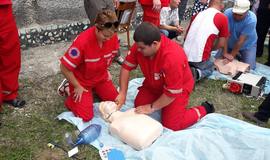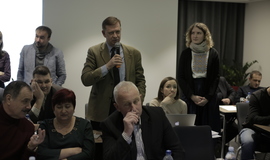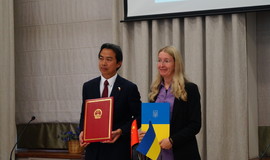News
Emergency Care Reform: Ukraine introduces Central 103 EMD system to improve efficiency of emergency care across the country
Central 103 - an electronic emergency medical dispatch (EMD) system – has been specifically developed to ensure the use of adaptive and optimized dispatch algorithms in line with internationally recognized EMS guidelines and standards. This system will be first introduced in a test mode in eight oblasts and the city of Kyiv. The use of modern technology and flexible EMD algorithms will allow better utilizing the EMS vehicles’ capacity and reducing emergency response time.
Why do emergency medical dispatchers need Central 103
Modern emergency medical dispatch services have already been introduced and successfully operate in some regions of the country. The first step in this direction was made owing to the coordinated work of the regional EMS & Disaster Medicine Centers and local authorities. Nevertheless, despite the progress achieved, the implementation process was not centralized, which is why all these regions currently use different EMD algorithms and services – there is no single communication center or data exchange system.
In practice, this results in various problems in locating and dispatching EMS vehicles. For example, when a car accident occurs at the border of two regions, a dispatcher sends an ambulance from the region in the territory of which the accident has been registered, not the one that is the closest to the scene at that moment.
Therefore, in the course of the Emergency care reform the Ministry of Health of Ukraine is introducing a central EMD system to ensure the fastest possible emergency response.

How will Central 103 improve the efficiency of EMD services
Connecting all regional EMD services to the central system will enable dispatchers to exchange information about the emergency call-taking and processing. The integration of all regional EMD services into Central 103 and the introduction of new EMS protocols will help us achieve the following objectives:
- to optimize the efficiency and performance of regional dispatchers and EMD services;
- to reduce the time interval between a call receipt and an ambulance arrival to the scene;
- to obtain qualitative data and transparent statistics for analysis of the overall EMS system performance;
- to engage emergency response professionals from the different special units, to encourage functional interactions among the different units within the system;
- to develop special emergency call services for people who have a hearing and/or speech impairment.
What are the key stages of the Central 103 implementation
The Central 103 emergency medical dispatch system will be first implemented in the eight oblasts of Ukraine (Vinnytsia, Donetsk, Zaporizhzhia, Odesa, Poltava, Ternopil, Kharkiv, Kherson) and the city of Kyiv. The Ministry’s experts outlined the key steps to successfully launch the project. In addition, many technical details were clarified through discussions with representatives from the regional EMS and Disaster Medicine Centers.

One of the priorities is the development of the uniform requirements for EMD services. This is to ensure that all the regions that have just started upgrading EMD services will use the unified tools and approaches to develop integrated EMD services and to join the central system in the future.
Central 103 will be eventually integrated into the eHealth system. This will allow obtaining complete and accurate medical records, ensuring data integrity and establishing data interchange between the emergency care units and other health care departments.



